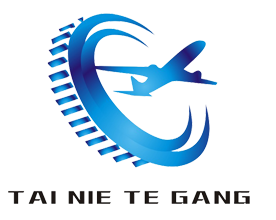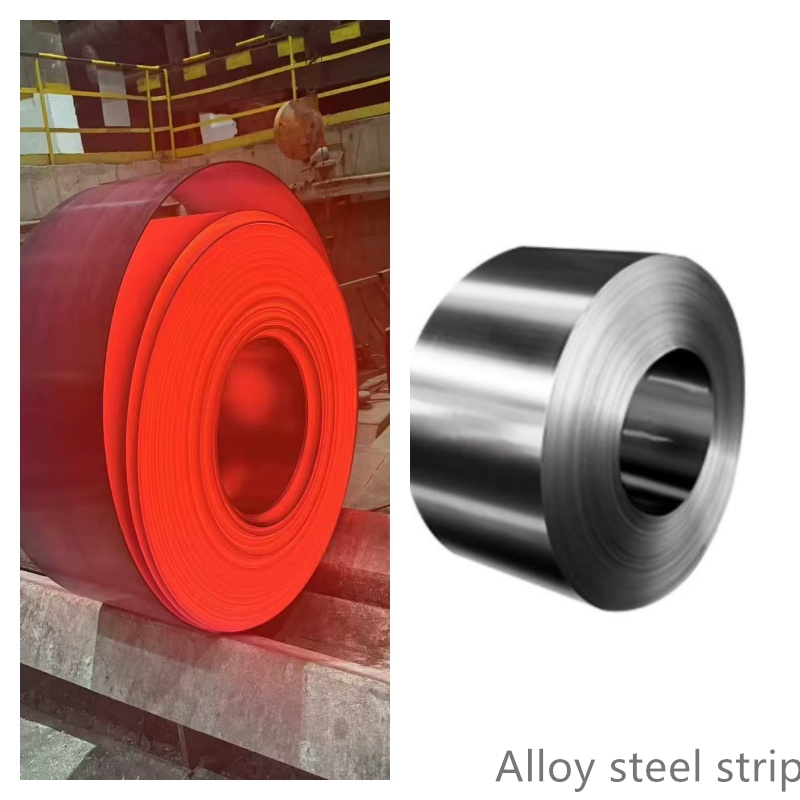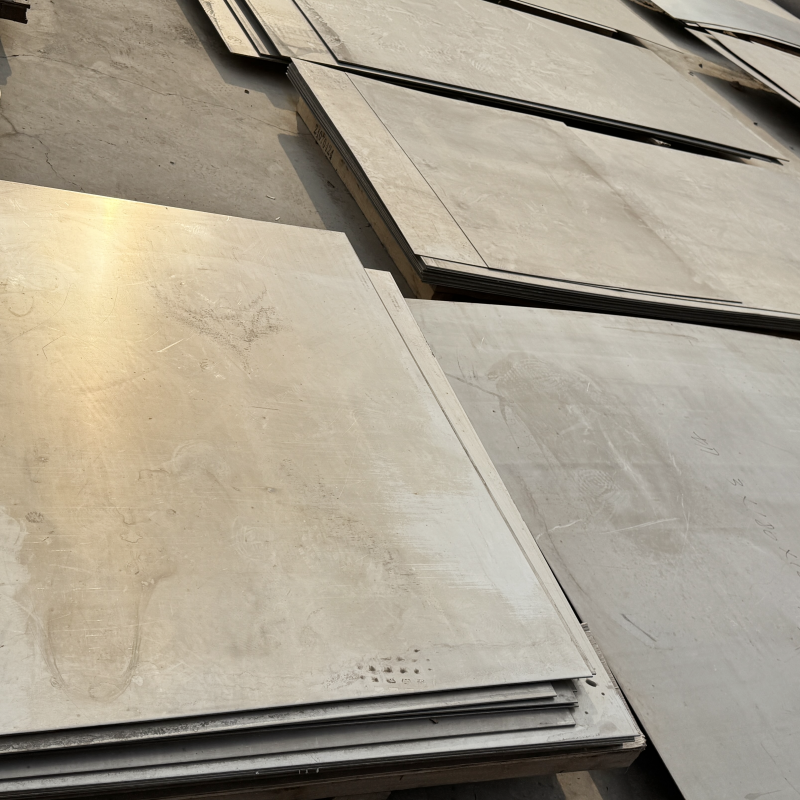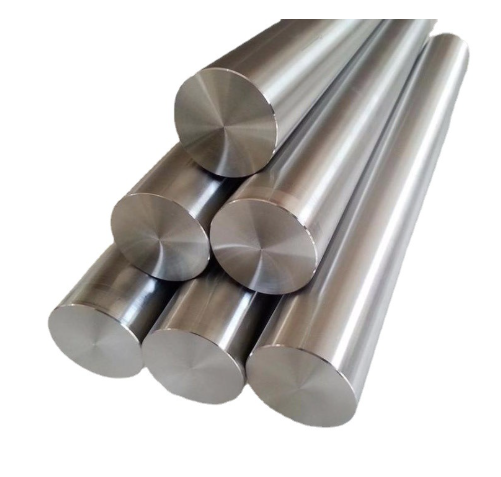
Product
Message
NS335 Corrosion resistant alloy Plate,Roll,Steel belt,Great,Tube,Forging
NS335 (Hastelloy C-4, N06645, 2.4610) alloy is an austenitic low carbon nickel-molybdenum-chromium alloy. The main difference between Nicrofer 6616 hMo and other earlier developed alloys of similar chemical composition is the low carbon, silicon, iron, and tungsten content.
Category:
Corrosion resistant alloy
Email:
1. Overview of NS335 (Hastelloy C-4, N06645, 2.4610) corrosion-resistant alloy:
NS335 (Hastelloy C-4, N06645, 2.4610) alloy is an austenitic low carbon nickel-molybdenum-chromium alloy. The main difference between Nicrofer 6616 hMo and other earlier developed alloys of similar chemical composition is the low carbon, silicon, iron, and tungsten content. Such a chemical composition enables it to exhibit excellent stability at 650-1040°C, improve resistance to intergranular corrosion, and avoid edge-line corrosion susceptibility and weld heat-affected zone corrosion under appropriate manufacturing conditions.
1. The characteristics of NS335 (Hastelloy C-4, N06645, 2.4610) alloy are:
(1) It has excellent corrosion resistance to most corrosive media, especially in the reduced state.
(2), excellent local corrosion resistance in halides.
2. NS335 (Hastelloy C-4, N06645, 2.4610) alloy chemical composition:
|
C≤ |
Si≤ |
Mn≤ |
P≤ |
S≤ |
Cr≥ |
Ni≥ |
Mo≥ |
Cu≤ |
|
0.015 |
0.08 |
1.00 |
0.040 |
0.030 |
14.0-18.0 |
Margin |
14.0-17.0 |
- |
|
Other |
Al≤ |
Ti≤ |
Fe≤ |
N≤ |
Co≤ |
Nb≤ |
W≤ |
V≤ |
|
- |
- |
3.00 |
- |
2.00 |
- |
- |
- |
2. Physical properties of NS335 (Hastelloy C-4, N06645, 2.4610) alloy:
(1), density: ρ=8.6g/cm3
(2) Melting temperature range: 1335~1380℃
|
Temperature °C |
Specific heat capacity J/Kg K |
thermal conductivity W/m K |
Resistivity μΩcm |
Elastic modulus KN/mm2 |
Expansion coefficient 10-6/K |
|
0 |
406 |
|
|
|
|
|
20 |
408 |
10.1 |
124 |
211 |
|
|
93 |
|
|
|
|
|
|
100 |
426 |
11.4 |
125 |
207 |
10.9 |
|
200 |
448 |
13.2 |
126 |
202 |
11.9 |
|
204 |
|
|
|
|
|
|
300 |
465 |
15.0 |
127 |
195 |
12.5 |
|
316 |
|
|
|
|
|
|
400 |
477 |
16.7 |
128 |
188 |
12.9 |
|
427 |
|
|
|
|
|
|
500 |
490 |
18.4 |
129 |
181 |
13.2 |
|
538 |
|
|
|
|
|
|
600 |
502 |
20.5 |
132 |
175 |
13.6 |
|
649 |
|
|
|
|
|
|
700 |
512 |
22.6 |
135 |
168 |
14.0 |
|
760 |
|
|
|
|
|
|
800 |
522 |
24.8 |
138 |
158 |
14.5 |
|
871 |
|
|
|
|
|
|
900 |
|
|
|
149 |
15.1 |
|
982 |
|
|
|
|
|
|
1000 |
|
|
|
138 |
15.9 |
3. NS335 (Hastelloy C-4, N06645, 2.4610) alloy mechanical properties:
The minimum value in the table below is the data measured in the longitudinal and transverse directions of the calibrated size specification sample (solution treated state). Special specification products and special material properties can be customized according to customer requirements.
4. NS335 (Hastelloy C-4, N06645, 2.4610) alloy NS335ISO-V notch test:
Average value ≥120J/cm2, room temperature ≥120J/cm2 -196℃
5. Metallographic structure of NS335 (Hastelloy C-4, N06645, 2.4610) alloy NS335:
NS335 has a face-centered cubic lattice structure, and its chemical composition ensures metallographic stability and anti-sensitization.
6. NS335 (Hastelloy C-4, N06645, 2.4610) alloy corrosion resistance:
The higher molybdenum and chromium contents make NS335 alloy resistant to various chemical media, including reducing media such as phosphoric acid, hydrochloric acid, sulfuric acid, chlorine, organic or inorganic chlorine-containing media. Due to its high nickel content, NS335 is effective against stress corrosion cracking due to chlorine, even in hot chloride solutions.
Time-temperature-sensitization curve (carbon content 0.008%, refer to ASTM G28 method A)
2. NS335 (Hastelloy C-4, N06645, 2.4610) corrosion resistant alloy Application scope:
NS335 is widely used in most chemical fields and high temperature environments.
Typical application areas:
1. Flue gas desulfurization system
2. Pickling and acid regeneration plants
3. Production of acetic acid and agrochemicals
4. Titanium dioxide production (chlorine method)
5. Electrolytic plating
3. NS335 (Hastelloy C-4, N06645, 2.4610) corrosion-resistant alloy processing and heat treatment:
NS335 alloy can be manufactured and processed by conventional production processes.
1. NS335 (Hastelloy C-4, N06645, 2.4610) alloy heating:
Workpieces should always be kept clean and free from contamination before and during heat treatment.
Do not contact sulfur, phosphorus, lead and other low melting point metals during heat treatment, otherwise Nicrofer 6616 hMo alloy will become brittle, and attention should be paid to removing dirt such as marking paint, temperature indicating paint, crayons, lubricating oil, fuel and so on. The lower the sulfur content in the fuel, the better, the sulfur content in natural gas should be less than 0.1%, and the sulfur content in heavy oil should be less than 0.5%. Electric furnace heating is a better choice, because the electric furnace can accurately control the temperature and the furnace gas is clean. If the gas of the gas stove is pure enough, you can also choose.
The furnace gas of the heating furnace should be neutral to slightly reducing. The furnace gas should be prevented from fluctuating between the oxidizing and reducing properties, and the heating flame cannot be directly burned to the workpiece.
2. NS335 (Hastelloy C-4, N06645, 2.4610) alloy hot working:
The hot working temperature range of NS335 is 1080℃~900℃, and the cooling method is water cooling or other rapid cooling methods.
To ensure the best corrosion resistance, solution heat treatment should be carried out after hot working.
3. NS335 (Hastelloy C-4, N06645, 2.4610) alloy cold working:
The workpiece should be in solution heat treatment state during cold working. The work hardening rate of NS335 is greater than that of austenitic stainless steel, so the processing equipment needs to be selected. There should be intermediate annealing in the cold rolling process. If the cold rolling deformation is greater than 15%, the workpiece needs to be subjected to secondary solution treatment.
4. NS335 (Hastelloy C-4, N06645, 2.4610) alloy heat treatment:
The solution treatment temperature range of NS335 is 1050℃~1100℃. For materials with a thickness of less than 1.5mm, the recommended cooling method is water quenching, and rapid air cooling can also be used to obtain maximum corrosion resistance.
During heat treatment, the workpiece must be kept clean.
5. NS335 (Hastelloy C-4, N06645, 2.4610) alloy descaling:
The adhesion of surface oxides and slag around the weld of NS335 is stronger than that of stainless steel. It is recommended to use fine
Grinding with crystal belt or fine-grain grinding wheel.
Before pickling with HNO3/HF mixed acid, the oxide film must be broken up by sandblasting or grinding.
6. NS335 (Hastelloy C-4, N06645, 2.4610) alloy machining:
Machining of NS335 is to be done in the annealed state. Because of the high work hardening of Nicrofer 6616 hMo, it is advisable to use low cutting speeds and heavy feeds for turning under the cold work hardened surface.
7. NS335 (Hastelloy C-4, N06645, 2.4610) alloy welding:
(1) NS335 can be welded by various welding processes, such as tungsten electrode inert gas shielded welding, plasma arc welding, manual sub-arc welding, metal inert gas shielded welding, and molten inert gas shielded welding. Pulse arc welding is preferred. Before welding, the material needs to be annealed to remove oxide scale, oil stains and various marking marks, and the width of about 25mm on both sides of the weld needs to be polished to a bright metal surface. With low heat input, the interlayer temperature does not exceed 150°C. Pre- and post-weld heat treatment is not required.
(2), the recommended filler metal: electrode: ENiCrMo-7, welding wire: ENiCrMo-7
(3) Using the above welding materials, the precipitation of carbon and silicon can be minimized.
(4) To get the most suitable corrosion resistance, first consider argon arc welding GTAW. For GTAW and SMAW, use the same welding consumable as the base metal.














